Much needed perspective....
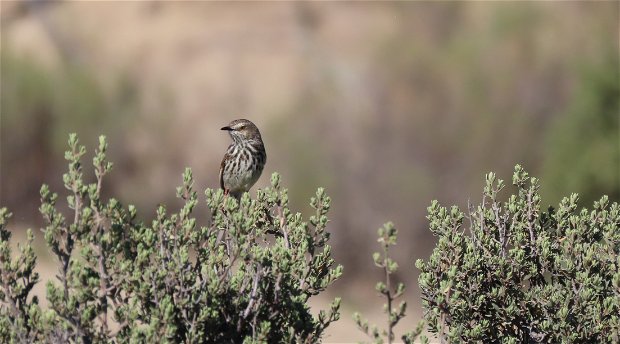
A beautifully written letter which came at the perfect time…..exhausted after a year of hard work and even harder challenges….seeing herds of animals explode from the perimeter around the waterhole when packing lucern bales on the back of the vehicle…the wind being continuously nasty…howling and still very cold for this time of the year…we had not seen much of summer and spring has completely skipped us this year. The dust does not settle…only 128 mm of rain this year…never enough in one fall to create much of a puddle.
So….all in all, not much to feel very ‘festive’ about at this special time of the year….
And then this letter…..bringing tears of perspective….
What follows (in his own words...), is a brief and incomplete summary of the 4 days spend at Rogge Cloof by Jon & Bess in October 2019.
"Rogge Cloof is big. That may sound like an eccentric recommendation, especially as there are far larger wildlife conservation areas, but it certainly is big, and that really matters. To achieve and sustain a significant ecology (what people like to call "balanced") it is not enough to have two of everything. Nor, for that matter, fourteen of everything. For example, no nature reserve can survive without a proper mix of predators and prey, and for each single predator one needs a lot of prey to maintain the population. And each prey item has to serve and support (and avoid) many kinds of predators and parasites. Even the simplest stable ecology is horrendously complicated, and the more complicated an ecology, is the more likely it is to be resilient if not actually stable.
Such things are part of the reason why breaking up nature conservation areas around the world is the kiss of death. The more space and the greater the variety of the animals and plants in any region, the likelier it is to be healthy and productive and beautiful and resilient against disasters, whether natural or man-made. Break up the area and you destroy all that. So, when we hear that Rogge Cloof has a population of 1000 or 2000 springbok, that is not just an impressive statistic, but is an important aspect of the system.
So I do not apologise for beginning by mentioning the size of Rogge Cloof. It is in fact so big that one easily could get lost there, quite dangerously too, so the first thing one should do as a visitor, is to orient yourself by noting where the major landmarks are, such as Salpeterkop, some 20 km to the east-northeast. Nowadays there is a large fenced area around the chalets and related facilities, so that children in general, and adults without ambition to explore the grounds unaccompanied, may safely and peacefully wander as they please, and enjoy themselves. There is wild life even in the fenced area, mongooses and dassies and birds and veld rodents, but those visitors are small and unthreatening.
And there are plenty of opportunities to go on game drives and the like, with guides who will not get lost, and can take you to the most impressive spots without your having to brave sun and thorns and thirst and animals who seem to think that they belong there and you do not.
Visitors with other needs however, can exit the fenced area without supervision. There is no end of opportunity for every activity from spotting the rock types, to spotting the grasshoppers camouflaged upon the rocks; from stalking the scorpions to howling at the wilderness; and why not? A few hundred metres into the veld and no one need hear a whisper. Or care, for that matter. Have fun. But do wear protective clothing!
And that is just by day: night-time is different. Different things to see, to hear, to do. By all means enjoy a braai or a sing-song or ghost stories, but equally, if wild nature is what you are there for, then night is when animals come out that would be eaten if they appeared by day, and other animals go out to catch the ones that come out only by night.
And there are the stars. They are marvellous. The Sutherland sky is not famous for nothing. Even if you are not an astronomer, there is much to be said for planning your holiday for when the moon is close to the sun: a few days before or after New Moon. But by all means, if you like a romantic full moon, you could hardly see anything better elsewhere. Check online or ask knowledgeable friends about the best dates for seeing the milky way, planets, meteors, stars or even comets.
We first visited Rogge Cloof in summer of a horrible drought, and even so, we saw and enjoyed amazing things, so we scheduled a follow-up visit this past spring. Well, the Karoo can be shockingly generous, and shockingly cruel, and this time it wasn't in a generous mood. In spite of nice snow during the intervening winter, just enough to wet the earth and fool the spring plants, we arrived in an even worse drought. As far as that went, it was a disappointment. But even so, there was enough to keep us busy. We were there for just four days, and even though one must make allowance for the ease with which one creates duplicate pictures with digital cameras, I still haven't finished sorting mine out.
We saw plants, rocks, skeletons, insects, scorpions, birds, mammals, some large, some small, some in the flesh, some in traces, nests, and tracks. Some by day, some in the dusk, some at night. Some we recognised, many we did not. Some we sought out by ourselves, but some of the time we drove around with a charming pair of game guides who were new to the area, and whose eagerness and freshness were delightful. They were frank about their unfamiliarity with the Karoo, but they were anything but naïve, both being well qualified in their profession, and eagerly absorbing information about everything in the region, plant or animal, rock or night sky, or patches of veld that contrasted with their surroundings. Talk about friendly and stimulating company!
As for the things we saw, where to start? Don't wait till after you have settled in, there is plenty to absorb on the road alone, and plenty more as you enter the gate. Be alert and questioning. If you do not look and keep alert, you will see… Nothing. Might as well stay home and watch TV.
What we saw kept us busy all right. As we drove, the state of the veld alone was an education.
Veld watching is not like flipping channels on TV; it takes alert patience to find things, or to let them find you. Settling in, I took a quiet stroll to enjoy the landscape. From an apparently barren surface, a camouflaged grasshopper flew off. The challenge was irresistible, so I watched to see where it settled, and stalked it for a photo. I could not at first find it, and it mockingly erupted again a hands-breadth away from where I had been looking. It took several tries before I got a halfway satisfactory shot, thanking modern technology for amazing zoom capability in a cheap camera. The species was strange to me, but it was charmingly pop-eyed, and too alert for me to follow among the bushes and rocks.
Minutes later a few charming toktokkie beetles greeted me. I never can resist toktokkies. However clownish, they are interesting in their own right. Watch them carefully, and you can see them tok-tokking on the ground, and it is worth reading "The Soul of the White Ant" by Eugene Marais, just for his description of the toktokkie Morse signals. It is safe to handle them gently, and if you pick one up you can see the hard patch on the belly. With that they beat out their message. They cannot hurt you, but they may nibble at your skin; the Karoo can be a hungry place. With a bit of tact you often can feed one in your hand.
I love confiding living creatures.
The next item (still just minutes later) was a female wasp in the family Mutillidae — a so-called velvet ant. She was sveltely elegant in her patterned costume of ochre, black, and white, but her I did not handle. She was too fragile, too nervous, and possessed of a sting too painful for me to risk. I just took several shots to show how well she was camouflaged on the open rock and gravel.
The Karoo drought may kill, but cannot intimidate everything; I photographed an emerging Asparagus shoot, still tender, but already displaying the thorns that earn it the ominous names: "katdoring" and "wag-'n-bietjie". ("Cat thorn" and "wait a bit"). Some wild Asparagus species are tastier than cultivated asparagus, but even connoisseurs rarely take the trouble or risk the thorns. Many also produce tasty storage roots that look like garlic cloves and go well in a salad, but again, how much trouble are you willing to take for veld foods?
The next beasties to charm me were ground mantids, Ligariella. They are pot-bellied, wingless, and hunt over the open ground instead of ambushing prey in bushes. Many animals prey on them in turn, so they need good camouflage. They are nippy little things, and it takes a bit of effort to get good shots.
As always in the Karoo, there are many ant-lion pits, but they are not as easy to photograph as one might expect. They are in the open, or under overhanging rocks; they easy to see, and they don't run away, but it is tricky to adjust the lighting and angle to show them well. The insect must refresh them repeatedly, usually at night. It is helpful for the photographer to know this, because one needs to choose fresh pits for the most interesting shots, or to chivvy ants into them to see the action. The fresh pits are the ones with sharp bottoms, not rounded. Their tiny creators hide at the bottom with sickle jaws spread, waiting for a meal. Some people think this cruel, but cruelty has nothing to do with it. In nature everything uses what they are born with to find the food you are equipped for. Ant lions are no crueller than human vegans tramping the veld, killing or maiming everything that happens to get underfoot.
There are many kinds of spiders in the Karoo, though they do take a bit of finding. I found a beautifully camouflaged wolf spider and later on another one. Difficult subjects, suspicious and speedy. Only after sorting the pictures at home did I notice that one was a female (which I had in fact realised) and the other was a male and had furry white leg-warmers on his front legs. I assume they must be for signalling his good intentions to females, so that he can mate without getting eaten. Like most spiders, these are harmless to humans.
One could write books about ants in the veld, but most kinds are hard to find; many species come out mainly at night, largely to avoid the heat. The harvester ants for instance, Messor species, are interesting and important. Their colonies dig typical underground nests and the workers collect seeds for food. The husks they discard in middens outside the nest, often forming large, mysterious piles under bushes. People who don't know the piles to be ant middens commonly have no idea what they are; in fact they seldom notice them at all. Still, they are important; seeds of some plants are adapted to ant harvesting. Such plants actually depend on ants for sowing and manuring. They grow hard, resistant seeds with fatty stalks or skins that the ants eat, leaving the seeds unharmed. Such edible tissues are called elaiosomes.
The ant middens are friendly to the germination and growth of the young plants that survive the ants' feeding. One famous example is the rooibos of rooibos tea; for a long time the most difficult thing about growing the tea was finding and germinating the seeds. It was only after the activities of the ants was discovered, that the industry really could take off.
As an example of how relationships that look trivial, can be important in ecology, consider a little plant, a species in the geranium family, that grows in Rogge Cloof. I suspect it is an Erodium. One might call it a weed, but I would disagree; it survives dreadful droughts and herbivores feed on it eagerly, and Messor colonies harvest the twisty dry fruit segments, each of which contains one seed. In the nest they extract the seed and discard the fuzzy jacket onto the midden. So that tiny little herb, with its tiny, but pretty, flower, plays several parts in the region's ecology.
Similarly, another plant surprised me anew on this visit: Lycium tetrandrum. This grim Karoo thornbush is common in the reserve, and is vital to all sorts of insects and creatures that seek insects. It was in flower when we saw it in February and also when we returned in October. Its berries feed birds, and its nectar feeds bees, flies, wasps, ants, butterflies and moths. The branches bear scale insects whose honeydew and fungus feed many insects, and the scales support parasitoids and hyperparasitoids. Colourful beetles feed on its leaves. Each bush is an oasis in its own right, and bless that oasis, say I. Bless it beyond any rose in a garden.
The peculiarly flat slabs that result from the splitting of sedimentary rocks in this region are important in various ways. For one thing, it has been valuable in producing fences and even housing materials. It has had some peculiar effects in the natural selection of the region during all the tens of millions of years that the weathering of the mountains has proceeded. Flat stones offer plentiful shelter to many animals. And above ground, many species' camouflage relies on resemblance to flat surfaces. Grasshoppers for example, include some beautiful examples. One species that I photographed has a flat-topped thorax, and to spot it in the rocks one must be practically clairvoyant, or very patient!
And remember the scorpions. We photographed some nice fat Opistophthalmus karrooensis females, thoroughly pregnant. I shouldn't be surprised if those had popped by now. I also found a cute little male, who did not welcome me, but did his best threaten me if I didn't leave him in peace. He ran about like anything with his rear end high in the air, and tail fully extended. I believe that their sting is not dangerous to a healthy adult, but hurts like fury. That was enough for me, but I did get some photos. I also found a few cast skins (exuviae) which were informative, because they showed how scorpion moulting works, and also showed certain of the details of the skin, that were hard to see on the living scorpions. I also found one small skin of a Buthid scorpion, but I don't know the genus, so cannot be sure whether the actual animal would have been medically important.
There is more, this being only day two of four, but I am out of steam and any reader must be out of patience. We'll come back when we can, preferably after lots and lots of rain. If you can see this sort of thing in the drought, what will good rains bring?"
Jon & Bess....our heartfelt thanks and appreciation for your friendship and for reminding us once again that we are privileged to experience this special place every day.

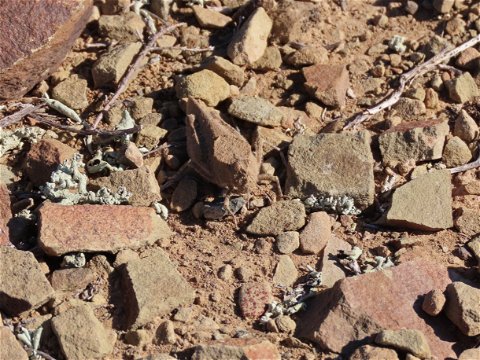
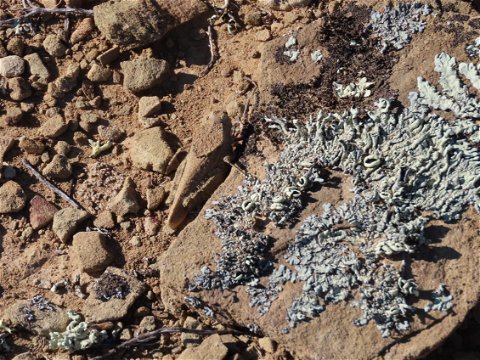
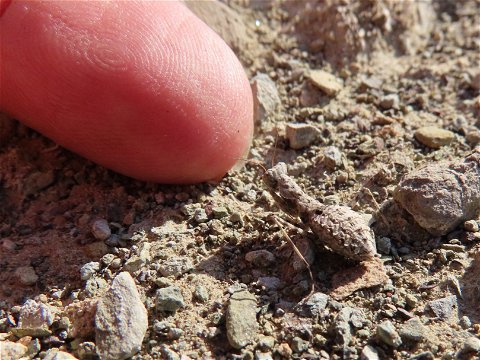
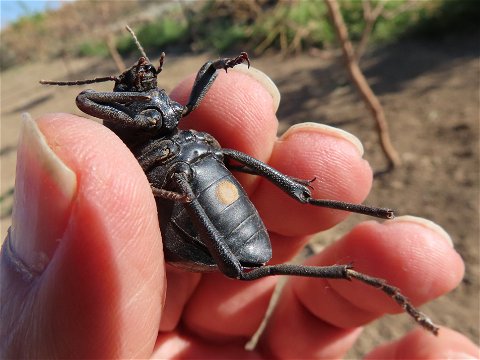

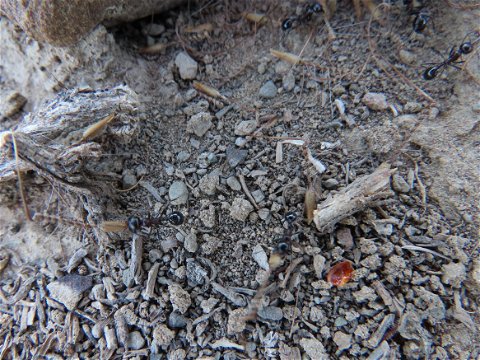
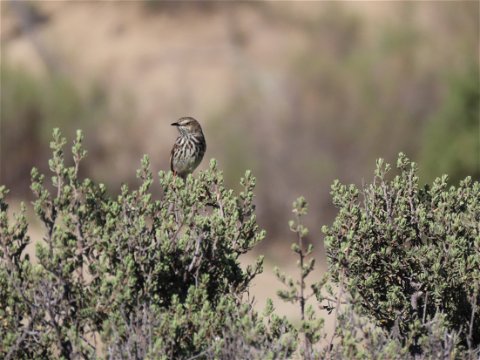
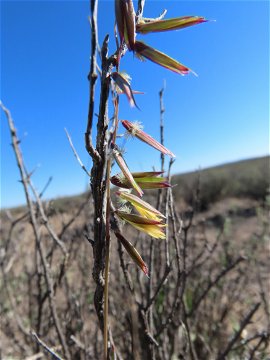



Share This Post